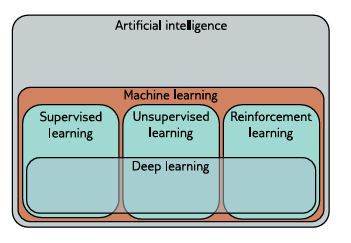What is the differnece between supervised and unsupervised learning ?

Machine learning is everywhere these days, from Netflix recommendations to self-driving cars. But did you know that there are different ways machines can learn? Two of the most common methods are supervised learning and unsupervised learning. While they might sound similar, they’re used for very different purposes. Let’s break it down in simple terms!
What is Supervised Learning?
Imagine you’re teaching a child to identify animals. You show them a picture of a cat and say, “This is a cat.” Then you show them a dog and say, “This is a dog.” Over time, the child learns to recognize cats and dogs on their own. This is exactly how supervised learning works!
In supervised learning, the algorithm is trained using labeled data. This means the data comes with “answers” (or labels) that help the algorithm learn. For example:
If you’re building a spam filter, you’d feed the algorithm thousands of emails labeled as “spam” or “not spam.”
If you’re predicting house prices, you’d provide data about houses (size, location, etc.) along with their actual prices.
Once trained, the algorithm can make predictions on new, unseen data.

Caption:
Supervised learning uses labeled data to make predictions.
Real-Life Examples of Supervised Learning
Email spam detection: Classifying emails as spam or not spam.
Medical diagnosis: Predicting whether a patient has a disease based on symptoms.
Face recognition: Identifying people in photos.
Pros of Supervised Learning
It’s accurate when you have enough labeled data.
It’s great for tasks where you know exactly what you want to predict.
Cons of Supervised Learning
It requires labeled data, which can be time-consuming and expensive to create.
It can only predict what it’s been trained on.
What is Unsupervised Learning?
Now, imagine you give a child a box of mixed toys without any instructions. The child starts grouping the toys based on color, size, or type. There’s no right or wrong answer—the child is just finding patterns. This is how unsupervised learning works!
In unsupervised learning, the algorithm is given unlabeled data and tasked with finding hidden patterns or structures. Since there are no labels, the algorithm has to figure things out on its own.
For example:
If you’re analyzing customer data, the algorithm might group customers with similar shopping habits.
If you’re working with genetic data, it might identify clusters of genes with similar functions.

Caption: Unsupervised learning finds patterns in
unlabeled data.
Real-Life Examples of Unsupervised Learning
Customer segmentation: Grouping customers based on their behavior.
Anomaly detection: Spotting unusual patterns, like fraudulent transactions.
Market basket analysis: Discovering products that are often bought together.
Pros of Unsupervised Learning
It doesn’t need labeled data, making it faster and cheaper to use.
It’s great for exploring data and discovering hidden insights.
Cons of Unsupervised Learning
The results can be harder to interpret since there’s no “correct” answer.
It’s less precise compared to supervised learning.
Supervised vs. Unsupervised Learning: A Quick Comparison
| Aspect | Supervised Learning | Unsupervised Learning |
|---|---|---|
| Data | Uses labeled data (input-output pairs) | Uses unlabeled data (only input features) |
| Goal | Predicts known outcomes (e.g., spam or not spam) | Finds hidden patterns (e.g., customer groups) |
| Example | Teaching a child with labeled flashcards | Letting a child sort toys without guidance |
| Use Cases | Spam detection, medical diagnosis | Customer segmentation, anomaly detection |
Which One Should You Use?
The choice between supervised and unsupervised learning depends on your problem and the data you have:
Use supervised learning if you have labeled data and a clear goal, like predicting an outcome.
Use unsupervised learning if you’re exploring data and looking for hidden patterns.
Sometimes, a mix of both is used. For example, you might start with unsupervised learning to group data and then use supervised learning to make predictions.
Conclusion
Supervised and unsupervised learning are like two sides of the same coin. Supervised learning is like a teacher guiding a student, while unsupervised learning is like letting the student explore on their own. Both are powerful tools in the world of AI, and understanding their differences can help you choose the right approach for your needs.
Whether you’re building a recommendation system, detecting fraud, or just exploring data, these methods are the building blocks of modern machine learning. So, the next time you see a smart app or tool, you’ll know a little more about the magic behind it!